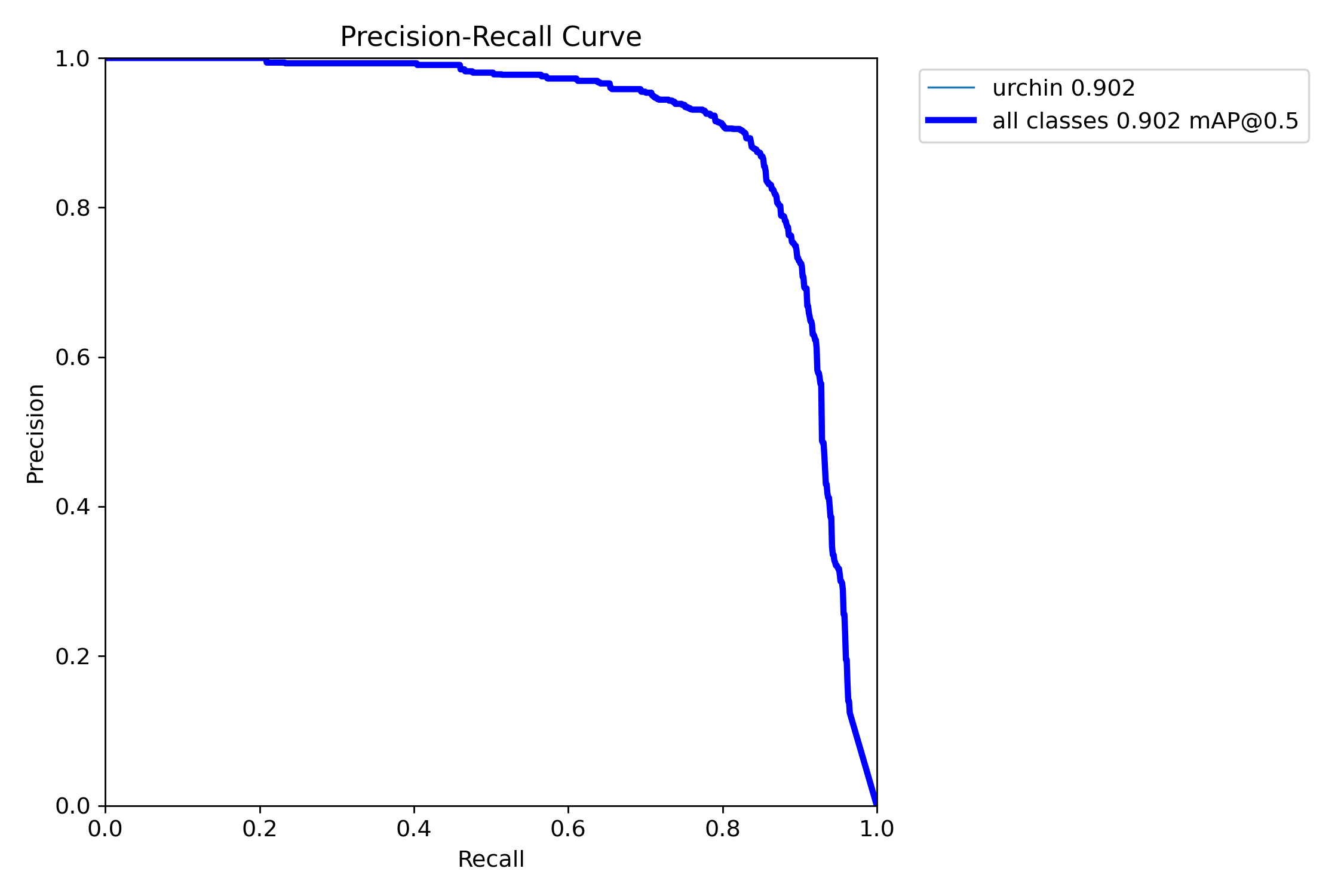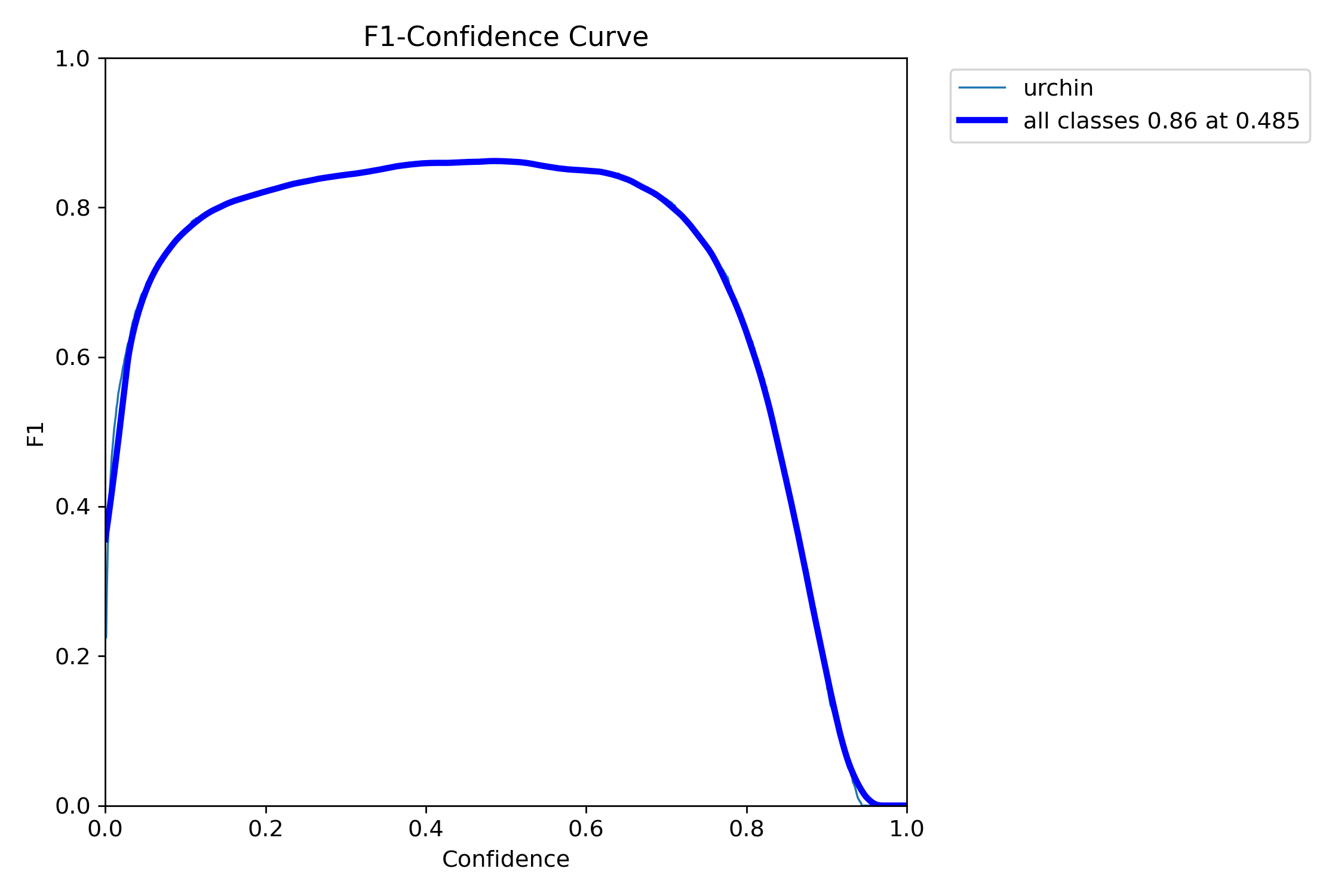Yolo11n Sea Urchin Detector
Model Details / Overview
This model was trained to detect sea urchins using the YOLO11 architecture. Trained on open datasets to identify and locate urchins in various underwater conditions.
- Model Architecture: YOLO11n
- Task: Object Detection (Urchin Detection)
- Footage Type: Underwater Footage
- Classes: 1 (urchin)
Test Results
Model Weights
The model's weights can be found here | Also available in various formats:
- PyTorch (best.pt): Standard format for PyTorch-based applications.
- Latest PyTorch Checkpoint (last.pt): The latest checkpoint from training.
- ONNX (best.onnx): ForONNX runtime.
- TorchScript (best.torchscript)
- NCNN: Efficient for mobile platforms and embedded systems.
Intended Use
- Real-time detections on underwater footage
- Post-processed video/imagery for detecting sea urchins in underwater environments
Factors
Model Performance
- Multi-source Dataset: Trained on datasets that include urchin images from various angles.
- Model Architecture (YOLO11n): Lightweight and optimized for real-time urchin detection in underwater footage.
- Training Data: The dataset is split into 70% training, 20% validation, and 10% test data.
- Training Parameters: Configured with 50 epochs, a 0.001 learning rate, and 640x640 image size for convergence.
Datasets
The training data was collected, parsed and organized from open sources:
- Roboflow Details:
- Workspace: sakana
- Project: urchins-cjlib
- Version: 1
- License: CC BY 4.0
- URL: https://universe.roboflow.com/sakana/urchins-cjlib/dataset/1
Dataset Composition:
- Training Images: 1169
- Validation Images: 334
- Test Images: 168
- Train/Val/Test Split Ratio: 7:2:1
Metrics
Below are the key metrics from the model evaluation on the validation set:
Training Validation Results
Training and Validation Losses
Confusion Matrix
Precision-Recall Curve
F1 Score Curve
Training Configuration
- Model Weights File:
yolo11n_urchin_trained.pt - Number of Epochs: 50
- Learning Rate: 0.001
- Batch Size: 32
- Image Size: 640x640
Deployment
How to Use the Model
To use the trained model, follow these steps:
- Load the Model:
from ultralytics import YOLO # Load the model model = YOLO("yolo11n_urchin_trained.pt")
Limitations
The model was trained on a mix of open source images. It may not generalize well to other environments or non-marine scenarios. Additionally, environmental variations, occlusions, or poor lighting may affect performance.
Additional Notes:
Dataset Sources:
- Two datasets were combined to improve model robustness, allowing the model to adapt to varying lighting and water conditions. Ethical Considerations:
- The detection results should be validated before using them for critical applications. The model’s performance in new environments might vary, and it may have biases if certain types of sea urchins were underrepresented in the training datasets.
- Downloads last month
- 0
Model tree for akridge/yolo11-sea-urchin-detector
Base model
Ultralytics/YOLO11



